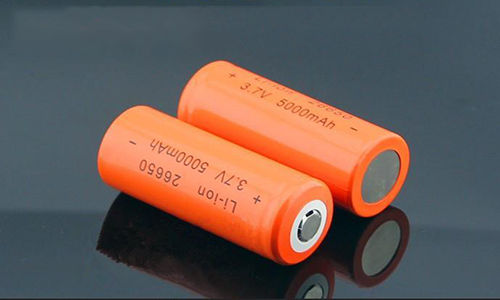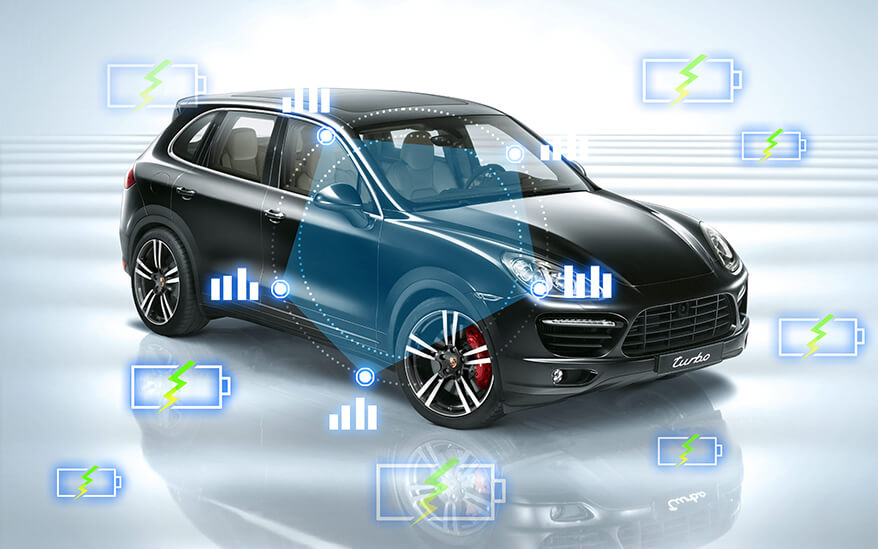Lithium-Ion Battery Maximum Charge Current
Sep 27, 2019 Pageview:1582
Lithium-particle batteries (LIB) have belonged to a group of battery-powered batteries that are working on a high voltage and usually utilized in most of the battery-powered devices. The Lithium-particle batteries are altogether lighter than different sorts of battery-powered batteries of comparative size. Lithium-particle batteries are intensely utilized in versatile hardware. These batteries can be normally found in PDAs, iPods, mobile phones, workstations, cars and so on. It works efficiently with all the electronic devices without any problem. Though, it has a life that can be controlled with effective use.
The batteries are sensitive enough that is why the charging time is also important to know because if overcharge, it may blast. The reason is the lithium ions got fire if they charge frequently and become the reason of dangerous incident. All the lithium-ion batteries are not giving the same voltages but it depends on their capability that is why it is important to follow the instruction of the batteries that are given by the manufacturers. Let’s find out more about lithium-ion batteries.
1.Is there any current limitation on charging a lithium-ion battery?
Now, where there are many restrictions of using and charging lithium-ion batteries so there must be some charging limits also for better usage. It is also depending on the performance rate of the batteries. If it charges on the lower rate, it will give you better performance with the safety. The only drawback of the low charging rate is it will take a long time for charging.
The fast charging is also effective for them and it also depends on the size of the batteries. Here are the simple guidelines that will help you to charge the lithium-ion based batteries.
2.Simple Guidelines for Charging Lithium-based Batteries
I.Turn off the device:
Straightaway turns off the device or you can also disconnect the batteries from the charging. It is essential to turn off the device because the running flow of the current may harm the battery if the user uses the device continuously. It is also forbidden to use mobile during charging because the battery is on risk.
II.A moderate temperature is required:
You need to Charge the lithium-ion batteries at a moderate temperature because the batteries are sensitive. They can be harmful under the sun and even in cool weather. So, do not charge them on freezing temperature and the normal room temperature is the best place to keep the batteries for charge and for saving purpose.
III.The charging rate of the battery:
According to the experts, the Lithium-ion batteries do not need to charge full and it also works efficiently on the partial charge for a long time. It is the depending on the requirement of the battery that how much it requires charging, it may be full or just a few percents is enough for it.
IV.Disconnect it after full charge:
Sometime after plug-in for charging the battery is starting to get warm. If you notice that the battery gets hot after some time so, straightaway turn it off. Always charge if the battery remains 30 to 40% for better usage.
3.Does fast charging damage lithium-ion batteries?
All the batteries are not working like depositories that whenever you pump in electrons in them and use them whenever you need them. The batteries are made on the rule of chemistry and according to them, the ions are highly a temperature-sensitive battery that is why there is a need to maintain the temperature where the batteries put.
i.Fast charging:
The answer to the question is yes, the fast charging is dangerous for the batteries. Fast charging means the increase in the charge voltage that will also become a reason to raise the charge amperage. The fast-charging fastens the chemical reaction and the temperature will be increased at higher. The batteries also degrade much faster because of high temperatures that mean the long life of the battery is getting down.
As we all know that the lithium-ion batteries are sensitive to heat, cold and charge rate, so, the fast charging harms the battery. As the ions get in connection with the fast charging, they start to change rapidly and if they overcharge, the battery might risk of blast or caught fire.
ii.The charge control:
The charge control in your PDA is intended to keep this from occurring however it isn't flawless. An excessively high charge rate that can cause the overheating before the charge controller can work. The charge control, for the most part, screens the voltage, not the amperage.
A good old yet at the same time still omnipresent model is the god old lead corrosive battery. A 12V FLA battery will acknowledge charge pace of 15 to 17 amps for every 100AH of limit up the 80% charge level or 14.25V. By then which has called the gassing point since now the water in the battery is shaping hydrogen and oxygen gasses. The synthetic response is working quicker and accordingly creating significantly more warmth. The arrangement is to restrain the charge current into 4 to 5 amps for all that means controlling the charging voltage. It’s astonishing how hot a 1000AH 48VDC battery can get if something turns out badly.
4.Is it OK to fully discharge a lithium-ion battery?
The lithium-ion batteries come with a charge of a few percentages. The empty battery will take more time to charge but as you regularly charge it, the charging rate will set according to the consumption. The batteries need to be a charged on time and if over the charge that might also not good for the user.
The full discharge is not good for lithium batteries so, better is charge it on time. If your battery is not working or discharge rapidly, take it to the workshop of the company. Do not try to fix it because it is very dangerous to open this battery. Lithium-ion batteries are best for use and if you keep it properly, it will last for a long time.
- Prev Article: Lithium Auto Battery Charger-Usage Tips
- Next Article: How to Discharge a Lipo Battery for Disposal
Leave Message
Hottest Categories
-
Hottest Industry News
-
Latest Industry News











